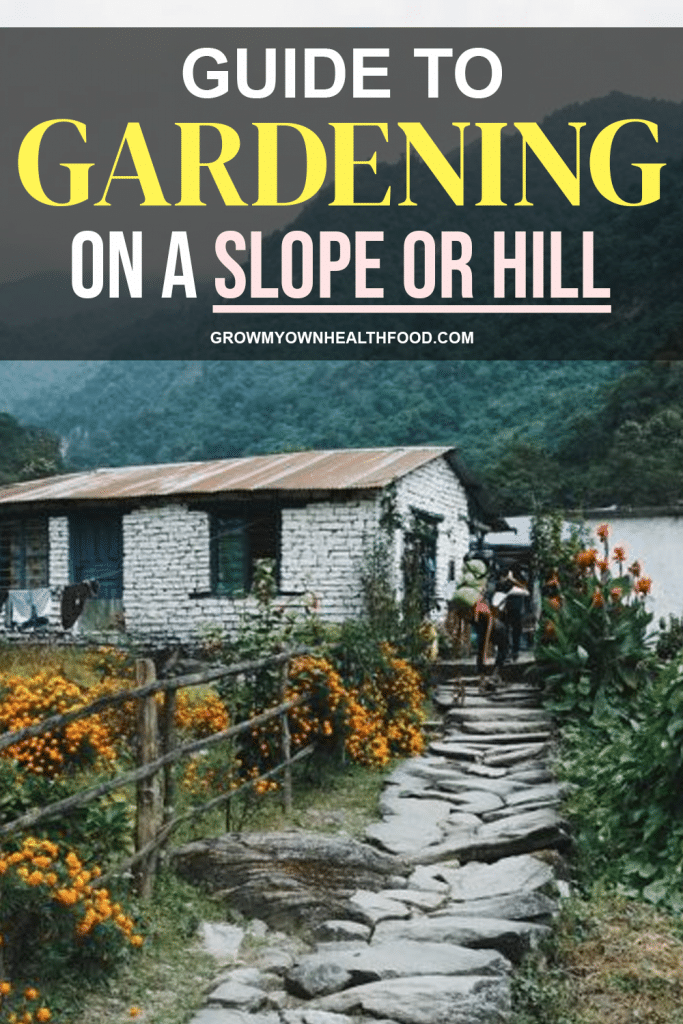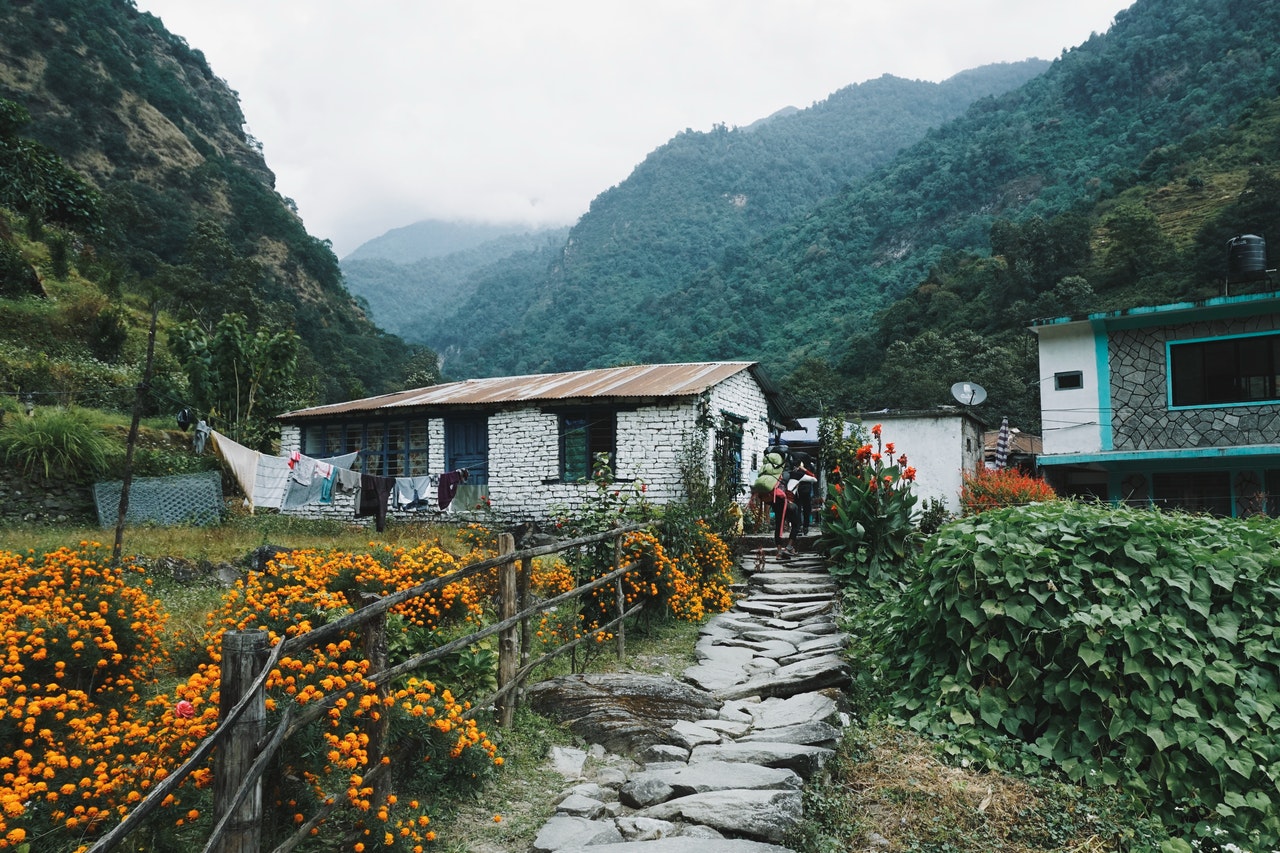As any slope-gardener will tell you, they’re in it for the view. Whether they’re staring out at the river or gazing down at a dense forest, this is why they’ve made peace with the idea of a future spent unflinchingly pushing lawnmowers up steep inclines. The grandeur and vastness of so much landscape presents the perfect challenge to a certain sort of gardener. Gardening on slope is an act of hubris for which the punishment is a great deal of time spent digging holes and levelling plots. How are you meant to go about designing the space without resorting to an endless terracing?
By picking the right plant for the right place, of course. That’s the first tenet of good garden design and it’s never more important than on a slope where erosion and depth of soil mean that all it’ll take to do away with months of hard work is a particularly strong rain.
You could very well start by digging big, deep holes for your plants and filling them with mulch, composted bark and plenty of pungent compost so that plants take root quickly but beware; you’ll want to work out where you stick the big plants beforehand.
Preparing For Gardening on a Slope

What you’ll usually see happening on flat ground is that the largest plants are relegated to the farthest, back-end of the border but in the upside down, higgledy-pigged world of slope planting this can be absolutely disastrous. If you’re looking up a slope, this can make large plants look even larger, obscuring everything else from vision.
You’ve got to be daring, a slope will punish any attempts at subtlety; boldly move bigger plants front and center, that way smaller trees can still be Ooh-ed and Aah-ed since they’re situated farther uphill. It’ll save you a whole lot of unnecessary digging down the line and you can spend the time you would’ve otherwise playing switcheroo with your plants marveling at your hard-earned view instead.
Terrace – Gardening On a Hillside
Where you’ve got the space, energy, money and time, a slope can be terraced into a series of meandering, level beds hemmed in by low walls, gabions or sleepers.
Trailing plants are especially well-suited to terraces as they can sprawl right over the edge, whilst underneath and against the boundary walls, the climate is conducive to tender plants like helianthemum and even the vastly hardier cacti and succulents (aloe vera for example). Terraces also have the added benefit of being a breeze to maintain.
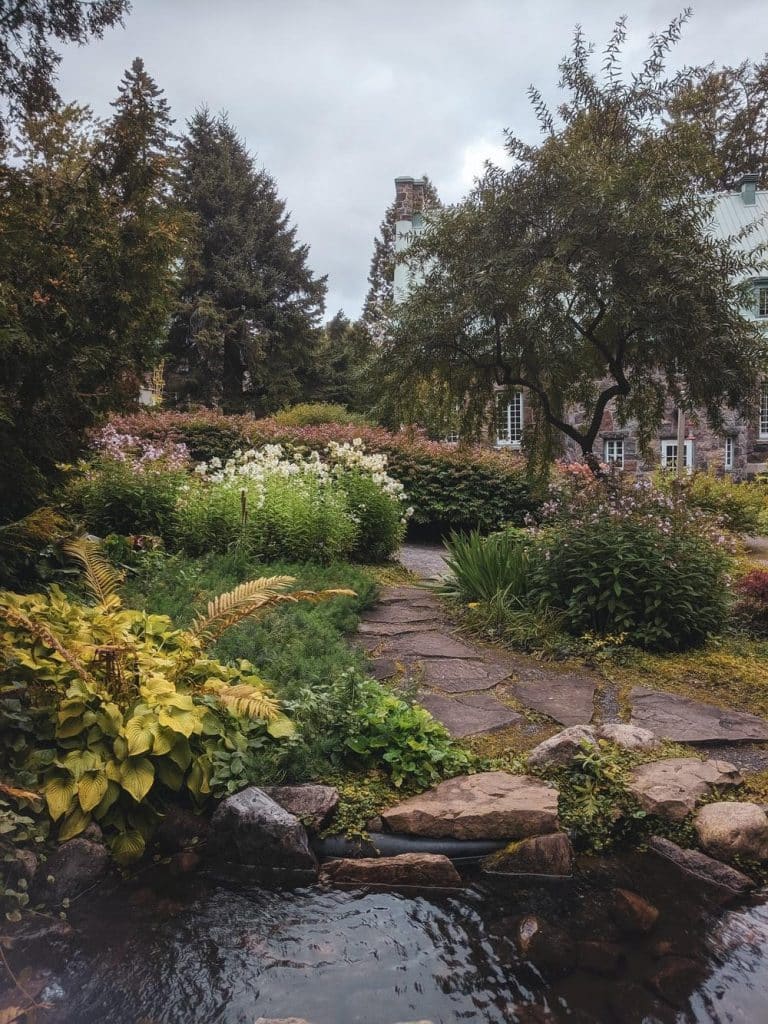
Stone walls are a classic, popular way to terrace and tame a hillside without lending the impression of being fortressed in. They’re definitely a lot of work to put in place but once you’ve done that, you’ll have yourself a strong, durable structure that’s functional and beautiful.
While gardening on a slope, if sizing constraints are preventing you from building one big wall, several low walls with level terraces between might be just what you’re looking for. Think about paving a level to build a patio and a comfortable outdoor seating area. A sloped backyard is a great place to put a stylish patio, from where to look out over the rest of your garden.
Planting On A Slope
Choosing the Right Place and Plants:
Erosion is always going to be a problem: it’s not enough to plant a few creepers and be done, you’ve got to do more to prevent your slopes from being washed away by so much as a drizzle. We love geraniums and Bergenia’s in particular! They’re beautiful and take root quickly, making for excellent (and showy!) groundcover. However, you’ll want to stay away from an excess of upright plants in the middle because they’ll swamp out the view whether you happening to be looking up or down.
Ensure Well-Drained Cover:
On the plus side, well-drained ground goes a long way towards reducing the prevalence of root rot and disease – and holds weeds at bay better than any weed-whacker ever could. In fact, in clay gardens in particularly wet places, slopes are a hot commodity for being the only place where many drought-tolerant plants will flourish.
Deep Rooted Plants Are Good:
Plant roots do a great job holding onto loose soil on a sloped flower bed. Your best bet to take your wild, unkempt hillside flower bed from eyesore to stunner is picking low-maintenance groundcover plants that’ll take root and stay root wherever their stems touch soil. In time, they’ll grow into dense mats that’ll do all the work for you!
Gardening on A Slope – Watering:
Tending is tough, mowing downright nightmarish and water – whether it be rainfall or irrigation – just drains clear off, leaving you soil-less and stranded. Easy-care drought-resistant plants that hold fast to the soil and evergreens to mitigate the damage inflicted by downpours, especially come winter, are what you need to be looking for.
Planting Trees On Slopes
Parched, hot and nigh-barren might not sound like ideal growing conditions but by understanding the nature of sunny slopes, you can use them for plants with an appreciation for the dry and baked like bearded iris, nerines and of course, succulents! You’ve just got to work with what you’ve got and use it to your advantage.
Obviously, that means plants that thrive on tons of moisture and have tender, delicate leaves that don’t retain water are a poor choice for a sloped-garden. Red maples and river birch, an example, would be especially hard-pressed to survive.
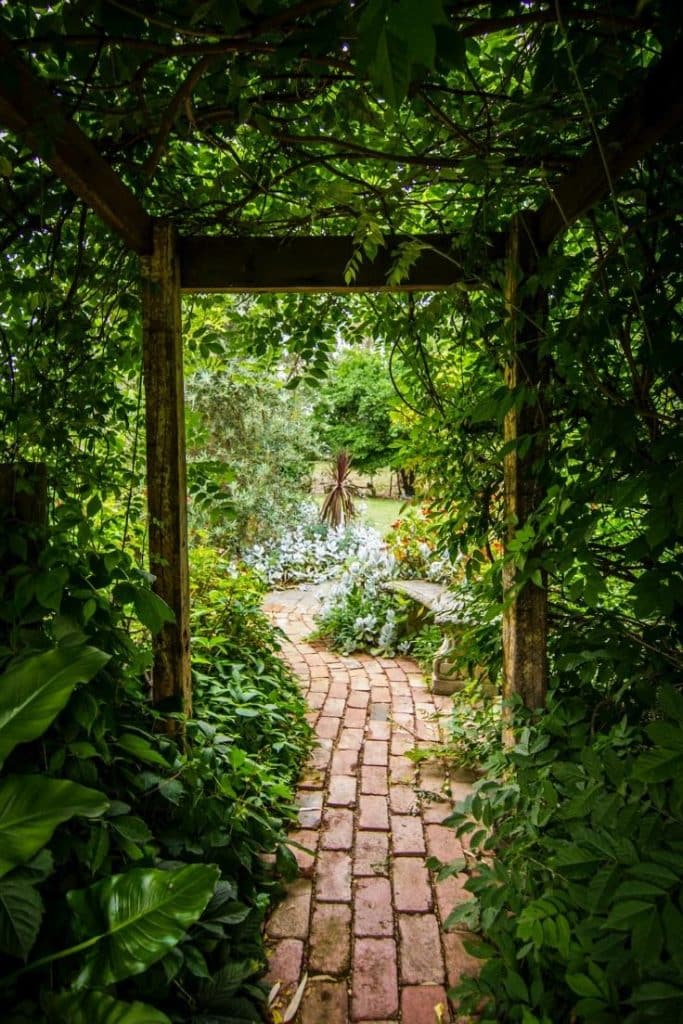
Here’s a few trees that do well on slopes:
- Douglas fir
- Monterey pine Dr. Hurd Manzanita
- Manuka
- Sugar Maple
- White Oak
Steps for Planting Trees on Slope
- The first order of business when you’re trying to plant a tree on a slope is to find the tree’s root collar: that’s the spot that where the slight outward curve of the tree meets the roots. You can find it by brushing away the soil round the trunk till you’re able to see where it flares. Then find yourself a nice flat spot and put the tree down so the top of the root collar is right above soil-level and the root caller sits just underneath the soil.
- You’ll need to excavate a big, wide hole so your tree has got the room it needs to establish a solid root system. An appropriate hole will be about three times the diameter of the root ball.
- Following that, you can move onto creating the plant shelf itself. Flatten the slope above the tree to create a level planting area uphill of where your tree is going to be. This’ll ensure your roots aren’t buried too deep. All excess soil should be placed downslope of the tree to elongate the shelf, in order to avoid running the risk of the tree’s roots becoming dislodged when it rains.
Precautions for Planting on a Slope:
- Position your planting hole carefully so as to avoid unnecessarily disturbing the soil and ensure you’ve placed your root ball at an appropriate depth.
- Remember, if the plant is too close to the bottom edge of the slope, the roots may become exposed by erosion and if it’s too close to the top of the slope, it may become buried by soil or debris tumbling down the hill.
Water Features
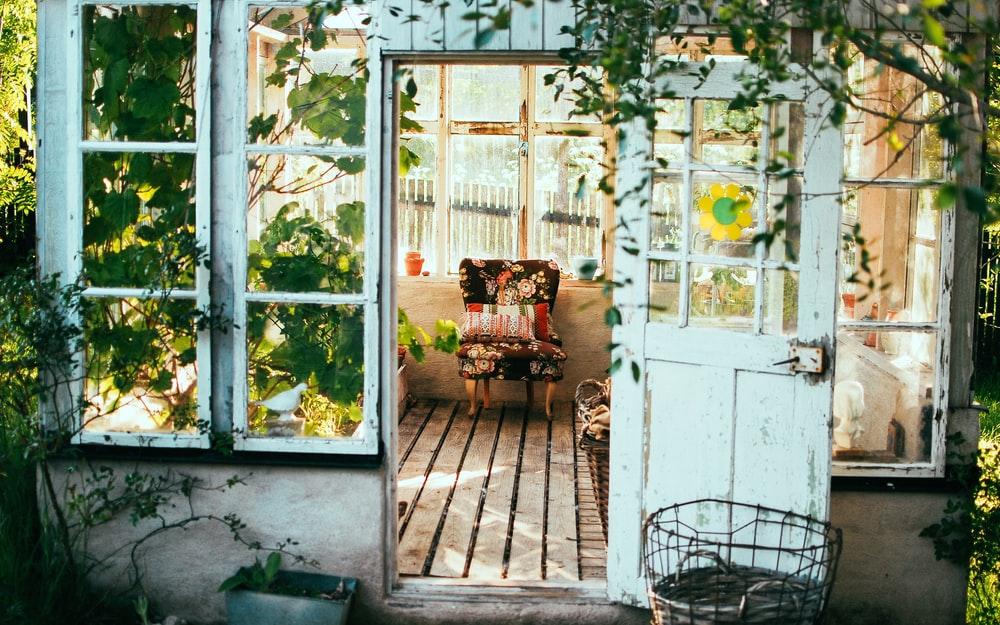
Sloping gardens are ideal for water features, whether it be a shallow stream, a striking waterfall or fountains cascading into a pond or sump below. Gardening on a slope with water features that can run down slopes that once seemed impossible to wrangle while stabilizing erosion and managing moisture levels.
